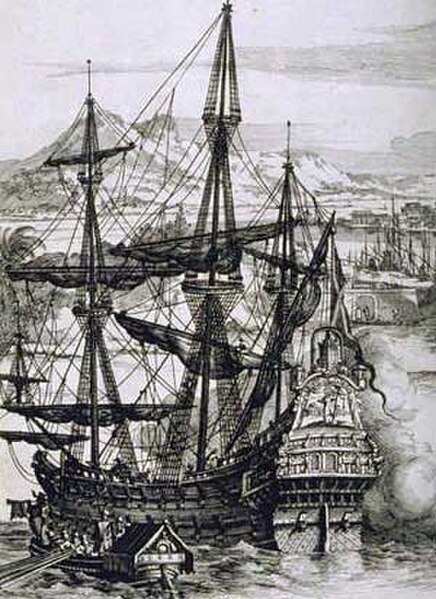Spanish cruiser Emperador Carlos V
Emperador Carlos V was an armored cruiser of the Spanish Navy which served in the Spanish fleet from 1898 to 1933. The money intended to build torpedo boats was used to build a 9,000-ton cruiser, deriving this cruiser from the British Blake class. Said cruiser stood out for its great autonomy, while it suffered from having little armor, mounting only during its first days of life 4 pieces of García Lomas of 100 mm.
Armored cruiser Carlos V around 1898.
Right elevation and deck plan as depicted in Brassey's Naval Annual 1906
Carlos V in 1898, on the Suez Canal.
Carlos V in 1914
The Spanish Navy or officially, the Armada, is the maritime branch of the Spanish Armed Forces and one of the oldest active naval forces in the world. The Spanish Navy was responsible for a number of major historic achievements in navigation, the most famous being the discovery of America and the first global circumnavigation by Elcano. For several centuries, it played a crucial logistical role in the expansion and consolidation of the Spanish Empire, and defended a vast trade network across the Atlantic Ocean between the Americas and Europe, and the Manila Galleon across the Pacific Ocean between the Philippines and the Americas.
The Battle of La Rochelle, 1372
Commemorative plaque at San Fernando's Panteón de los Marinos Ilustres, depicting a list of victories of the Armadas of Spain List of Victories Conquest of Majorca 1229 Conquest of Menorca 1232 Conquest of Ibiza 1234 Conquest of Seville 1248 Battle of Malta 1283 Combat of Sorrento 1284 Battle of Castellamare 1287 Battle of Cape St. Vincent 1337 Battle of La Rochelle 1371 Combat of Gibraltar 1407 Battle of La Rochelle 1419
The Battle of Lepanto, 1571
A 17th-century Spanish galleon








